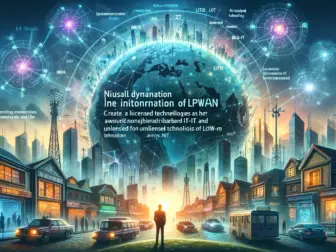Tag - telecommunications strategy
Revolutionizing Connectivity: Crafting a Future-Proof Telecommunications Strategy
Revolutionizing Connectivity: Crafting a Future-Proof Telecommunications Strategy
In an era where digital connectivity is not just a luxury but a necessity, the significance of a robust telecommunications strategy becomes paramount. The rapidly evolving technology landscape demands that telecommunications companies, governments, and businesses alike are not just reactive, but proactive in their approach to infrastructure development, service provision, and customer engagement.
The foundation of a future-proof telecommunications strategy lies in the recognition of emerging trends and the integration of cutting-edge technologies. The advent of 5G networks is heralding a new age of ultra-fast and reliable internet services, enabling the Internet of Things (IoT), autonomous vehicles, and an array of smart city applications. To stay ahead, a strategy must prioritize the rollout of 5G while ensuring the seamless transition from existing 4G networks, mitigating any digital divide.
Moreover, the telecommunications strategy should embrace the potential of artificial intelligence (AI) and machine learning (ML). These technologies can transform network operations, customer service, and predictive maintenance. By leveraging AI, companies can optimize resource allocation, anticipate network congestion, and personalize customer experiences at scale, thus creating a competitive edge.
Another essential aspect is cybersecurity. As the backbone of modern communication, the telecom sector is a prime target for cyberattacks. A comprehensive strategy must include robust security protocols to protect data integrity and user privacy. Investing in advanced encryption techniques, regular security audits, and employee training can prevent breaches that could undermine consumer trust and corporate reputation.
Sustainability is another critical factor to be integrated into any forward-looking telecommunications strategy. The industry must reduce its carbon footprint through energy-efficient infrastructure, adoption of renewable energy sources, and responsible disposal of electronic waste. Additionally, strategies should include measures to promote digital inclusion, ensuring that advancements in telecommunications benefit all segments of society.
Customer experience is at the forefront of any successful strategy. In a competitive market, it’s not just about providing a service but creating a relationship with users. Telecommunications operators must strive to offer seamless, omnichannel support, transparent pricing models, and flexible services tailored to the specific needs of different customer segments. Consumer data analytics plays a significant role in understanding user behavior and preferences, enabling a more personalized and satisfying service experience.
A key challenge in developing a telecom strategy is regulation. The strategy must be agile enough to adapt to changing regulatory landscapes across different regions. It requires ongoing dialogue with policymakers to ensure that regulations foster innovation, competition, and investment in the sector.
Finally, strategic partnerships are becoming increasingly important. Collaborations with technology providers, content creators, and even competitors can lead to synergies that enhance service offerings and expand market reach. These alliances can facilitate the sharing of infrastructure, research and development efforts, and the co-creation of novel services that cater to the ever-evolving demands of users.
In summary, a telecommunications strategy fit for the future is one that is dynamic, embraces technology, prioritizes security, commits to sustainability, puts the customer experience at its core, navigates regulatory environments skillfully, and leverages partnerships for mutual growth. With such a strategy, the telecommunications industry will not only survive the waves of change but thrive, driving progress in every corner of the globe.
